Union Membership, 2013
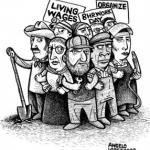
The number of union members rose 162,000 in 2013, reflecting a drop of 118,000 in the public sector that was offset by a rise of 281,000 in the private sector. Expressed as a share of the workforce, the union membership rate was unchanged in 2013, at 11.3 percent.
In 2013, the share of public-sector workers who were in a union decreased by 0.6 percentage points, from 35.9 percent in 2012 to 35.3 percent in 2013. In the private sector, the unionization rate did not change significantly, increasing from 6.6 percent in 2012 to 6.7 percent in 2013.
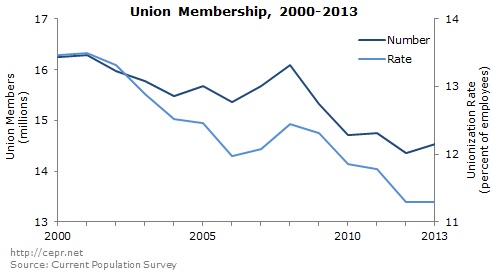
Unionization rates for both women and men were steady from 2012 to 2013, with the rate for women remaining constant at 10.5 percent and the rate for men decreasing by 0.1 percentage point, to 11.9 percent. Of the 162,000 increase in overall union membership, about 103,000 were women and 60,000 were men.
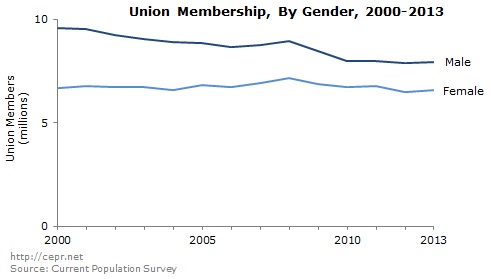
Unionization rates by race changed little between 2012 and 2013. As has been the case for decades, black workers were the racial/ethnic group most likely to be union members (13.6 percent, up 0.2 percentage points from 2012). White workers were the next most unionized group (11.0 percent, down 0.1 percentage points from 2012). Latino workers were the only group to see a noticeable decrease in their unionization rate (down 0.4 percentage points to 9.4 percent in 2013). The unionization rate for Asian workers decreased 0.2 percentage points to 9.4 percent.
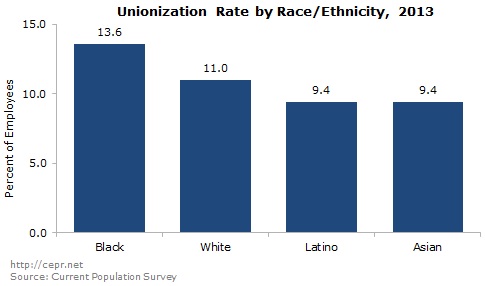
The broad industry categories with the largest increases in union membership were construction (up 95,000) and manufacturing (up 93,000), particularly durable goods manufacturing (up 53,000). By occupation, the aggregate “service occupations,” which includes jobs in health-care support, protective services, food preparation, office cleaning, and personal care, saw an increase in union membership of 85,000. Within this group, the largest union membership increases were in food preparation and serving related occupations (up 43,000) and health-care support occupations (up 37,000).
For the first time since 2008, the total number of union members in the private sector (7.3 million) was higher than the total number of workers in the public sector (7.2 million).
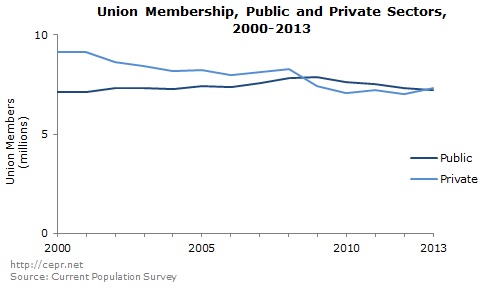
The states with the largest increase in union members were New York (up 145,000), Illinois (up 50,000), and Alabama (up 37,000). The states with the largest declines in union members were Texas (down 81,000), California (down 59,000), and Oregon (down 32,000).
The states with the highest union density in 2013 were New York (24.4 percent), Alaska (23.1 percent), and Hawaii (22.1 percent). The states with the lowest union density were North Carolina (3.0 percent), Arkansas (3.5 percent), and Mississippi (3.7 percent).
